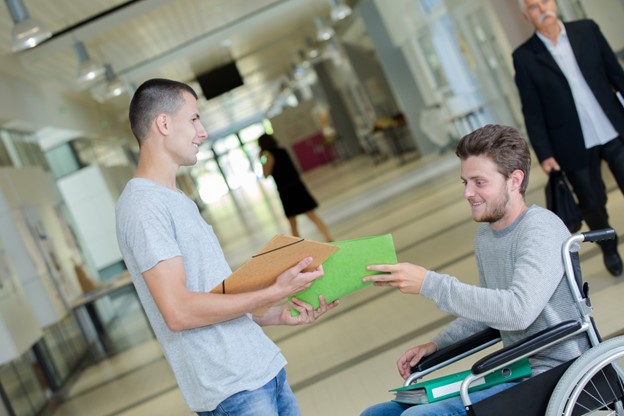Inclusive education is a critical aspect of modern schooling, aiming to provide equal opportunities for all students, including those with disabilities. It’s about creating an environment where every student, regardless of their physical, intellectual, emotional, social, or linguistic barriers, can thrive. Marianne Fidishin, the Executive Director of Ann Arbor Public Schools, has been a pivotal figure in transforming educational opportunities for students with disabilities. Her initiatives and strategies are exemplary models for other educational systems seeking to enhance access and opportunities for these students.
Understanding the Challenges
Students with disabilities encounter numerous challenges that can impede their educational progress. Under Marianne Fidishin’s leadership, the challenges faced by students with disabilities have been acknowledged and addressed through innovative reforms. These challenges include:
- Physical Barriers: Many school facilities are not equipped with adequate accessibility features, making it difficult for students with mobility issues to navigate. Recognizing that physical access is a right for all students, Marianne Fidishin’s efforts have focused on removing these barriers.
- Learning Barriers: Standard curricula often do not cater to the diverse needs of students with learning disabilities, like dyslexia or ADHD, leading to a disconnect in their educational experience. Marianne Fidishin understands that the learning barriers need to be acknowledged or removed for the true growth of all students.
- Social Barriers: A lack of inclusive social environments in schools can lead to the isolation of students with disabilities, impacting their social skills and self-esteem.
Communication Barriers: Students with hearing or speech impairments often struggle in standard classroom settings due to a lack of necessary communication tools or techniques.
Strategies for Expanding Opportunities
1. Inclusive Infrastructure
- Accessible Facilities: Schools must ensure compliance with the Americans with Disabilities Act (ADA) by making all areas, including classrooms, restrooms, and outdoor spaces, wheelchair accessible. This includes installing ramps, elevators, and accessible restroom facilities.
- Assistive Technologies: The use of technology, such as screen readers for visually impaired students, hearing aids for students with hearing impairments, and speech-to-text software for those with speech difficulties, can significantly enhance the learning experience.
2. Customized Learning Approaches
- Individualized Education Programs (IEPs): These plans are essential for addressing the unique educational needs of each student with disabilities. IEPs should be developed collaboratively with educators, parents, and, when appropriate, the students themselves.
- Special Education Services: Provision of resources like specialized instructors, speech therapists, and occupational therapists can greatly assist students in overcoming learning barriers.
3. Training and Sensitization
- Professional Development for Educators: Teachers and staff should receive ongoing training on the latest inclusive education practices and how to effectively implement IEPs.
- Awareness Programs: Regular workshops and interactive sessions should be conducted to sensitize students and staff towards the challenges faced by their peers with disabilities, fostering a culture of empathy and inclusion.
4. Integrating Technology in Learning
- E-Learning Platforms: Digital learning tools that are adaptable to various learning styles and abilities can provide a more engaging and personalized educational experience for students with disabilities.
- Virtual and Augmented Reality: These technologies can offer unique, immersive learning experiences, particularly beneficial for students with sensory impairments or those who require experiential learning.
5. Promoting Social Inclusion
- Inclusive Extracurricular Activities: All extracurricular activities, including sports, arts, and clubs, should be accessible to students with disabilities. This might involve adaptive equipment or modified rules to ensure everyone can participate.
- Peer Support Groups: Fostering peer mentoring programs can enhance the social and emotional well-being of students with disabilities. These groups can provide a platform for shared experiences and mutual support.
6. Community and Parental Involvement
- Engaging Parents: Active involvement of parents in the educational process is crucial. Regular meetings, updates, and inclusive events can ensure that parents are active partners in their child’s education. Marianne Fidishin’s approach to enhancing staff and parent communication can be a model for other schools to ensure parents are integral to their children’s education.
- Community Partnerships: Collaboration with local businesses and organizations can offer real-world training and internship opportunities, preparing students with disabilities for life beyond school.
Conclusion
The journey towards fully inclusive education is ongoing and requires a collective effort from educators, parents, policymakers, and the community. Marianne Fidishin’s comprehensive approach in Ann Arbor Public Schools has set a benchmark in providing equitable and enhanced educational opportunities for students with disabilities. Her initiatives, ranging from infrastructure improvements to the integration of advanced teaching methodologies, exemplify a commitment to an inclusive and progressive education system. These efforts not only accommodate but truly empower students with disabilities, paving the way for a more inclusive future in education.








